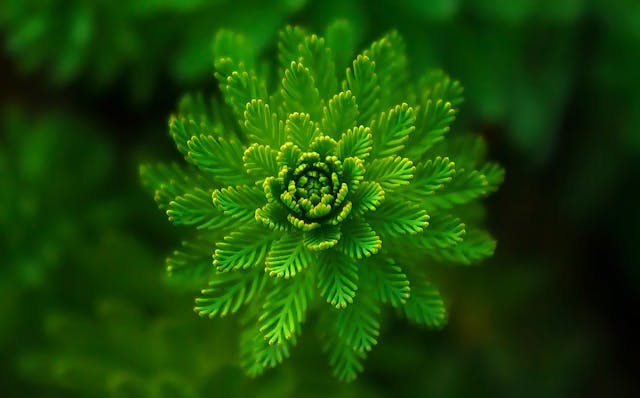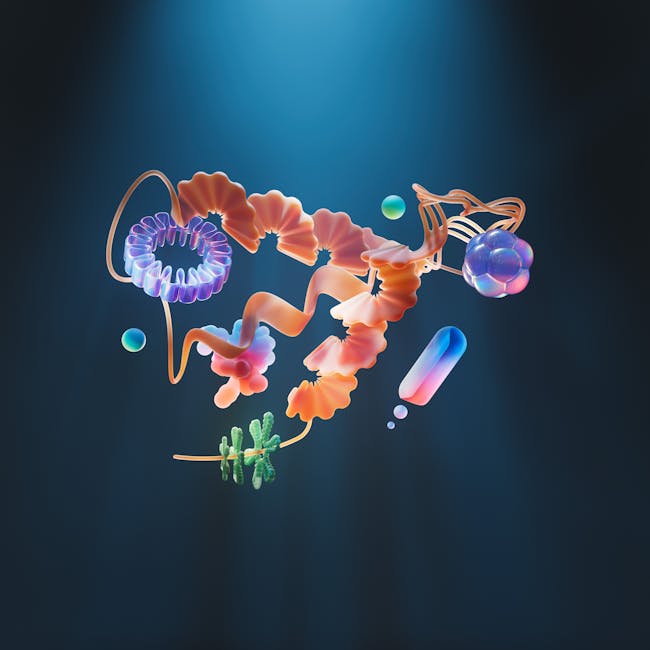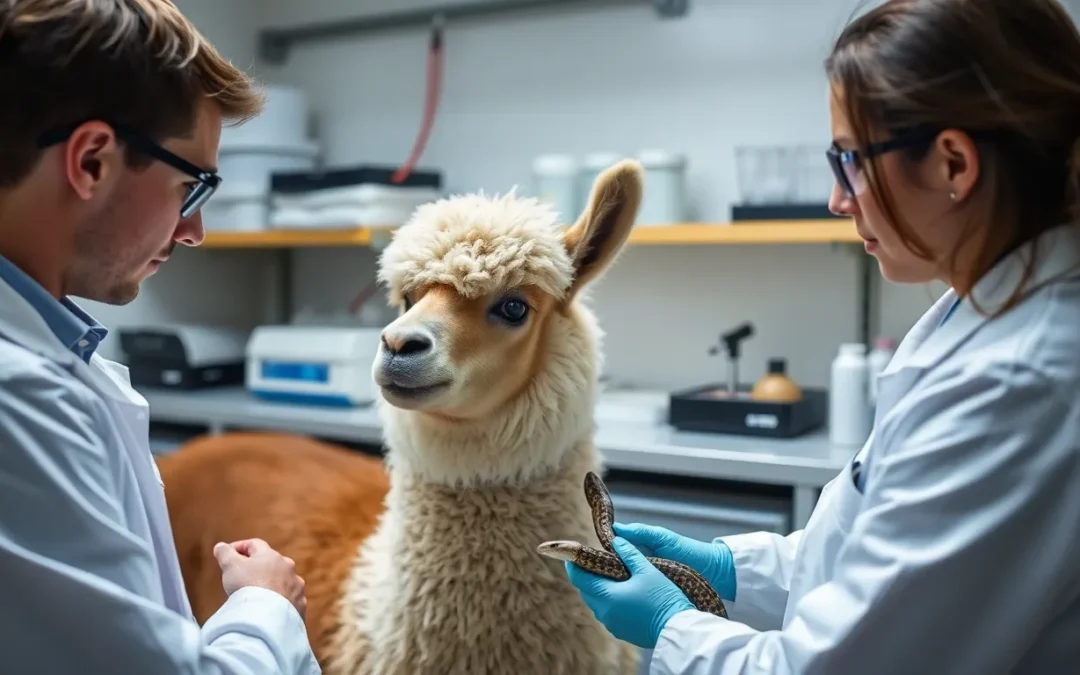Plant Biology is one of the most scoring areas in CBSE Class 11–12 Biology and the NEET (UG) medical entrance exam. Many students ignore it because they “like human physiology more”, but toppers know a secret:
👉 Plant topics are highly repetitive, conceptual, and formula-like. Once mastered, they give guaranteed marks.
In this article, we’ll build a complete roadmap to study plant-related chapters for both CBSE board exams and NEET, with:
- Key chapters and weightage
- Concept-wise breakdown
- High-yield NEET points
- Common mistakes
- Study strategy, notes tips, and MCQ practice methods
- Study strategy, notes tips, and MCQ practice methods
- Study strategy, notes tips, and MCQ practice methods
1. WHY PLANT BIOLOGY IS CRUCIAL FOR NEET & CBSE
1.1 Plant Topics in CBSE Syllabus
From NCERT Class 11 & 12 Biology, plant-based chapters include:
- Plant Kingdom
- Morphology of Flowering Plants
- Anatomy of Flowering Plants
- Transport in Plants
- Photosynthesis in Higher Plants
- Respiration in Plants
- Plant Growth and Development
- Sexual Reproduction in Flowering Plants (Class 12)
- Biotechnology & Applications sometimes use plant examples too
- Biotechnology & Applications sometimes use plant examples too
- Biotechnology & Applications sometimes use plant examples too
These chapters regularly appear in theory questions, diagrams, and short notes for boards.
1.2 Plant Biology in NEET Exam
In NEET, each question carries 4 marks and negative marking is present. Plant topics may contribute:
- About 30–40% of Biology questions when combined with plant physiology, diversity, and reproduction.
- Questions are mostly NCERT-based lines, diagrams, and small tricky facts.
- Questions are mostly NCERT-based lines, diagrams, and small tricky facts.
- Questions are mostly NCERT-based lines, diagrams, and small tricky facts.
If you treat plant chapters as “optional” or “boring”, you’re directly giving up 100–140 marks. For a medical seat, that’s dangerous.
2. IMPORTANT PLANT TOPICS – CHAPTER-BY-CHAPTER ROADMAP
Let’s go through the key plant topics from the NCERT that you must master for CBSE + NEET.
2.1 PLANT KINGDOM
Why it’s important:
Introduces classification, alternation of generations, and major groups of plants that NEET loves to ask direct, factual MCQs from.
Key Concepts:
- Basis of classification:
- Thallus organisation
- Vascular tissue presence/absence
- Seed habit
- Major groups:
- Algae (Chlorophyceae, Phaeophyceae, Rhodophyceae)
- Bryophytes (liverworts, mosses)
- Pteridophytes (ferns, horsetails)
- Gymnosperms (Pinus, Cycas, Ginkgo)
- Angiosperms (monocots, dicots)
- Life cycles: haplontic, diplontic, haplo-diplontic
- Alternation of generations: sporophyte vs gametophyte
- Alternation of generations: sporophyte vs gametophyte
- Alternation of generations: sporophyte vs gametophyte
NEET-Focused Tips:
- Make a comparison table:
- Algae vs Bryophytes vs Pteridophytes vs Gymnosperms vs Angiosperms
- Learn examples: NEET loves to ask “Pinus belongs to?”, “Funaria is a?” etc.
- Practice life-cycle diagrams of a typical bryophyte and pteridophyte.
- Practice life-cycle diagrams of a typical bryophyte and pteridophyte.
- Practice life-cycle diagrams of a typical bryophyte and pteridophyte.
2.2 MORPHOLOGY OF FLOWERING PLANTS
Why it’s important:
Very scoring. Almost every year NEET asks at least 1–2 questions from roots, stems, leaves, inflorescences, flowers, and fruits.
Key Concepts:
- Root: types (tap, fibrous, adventitious), regions, modifications (prop root, stilt root, pneumatophores)
- Stem: modifications (tendrils, thorns, tubers, rhizome, corm, stolon)
- Leaf: types (simple, compound), phyllotaxy, venation, modifications (spines, tendrils, succulent leaves)
- Inflorescence: racemose vs cymose
- Flower:
- Parts (calyx, corolla, androecium, gynoecium)
- Placentation (marginal, axile, parietal, basal, free-central)
- Aestivation (valvate, twisted, imbricate, vexillary)
- Fruit: true vs false fruit; types
- Seed: monocot vs dicot seeds
- Seed: monocot vs dicot seeds
- Seed: monocot vs dicot seeds
NEET-Focused Tips:
- Remember floral formulas & diagrams of families:
- Fabaceae
- Solanaceae
- Liliaceae
- Questions often ask:
- “Identify the family from floral formula.”
- “Which of the following is a false fruit?”
- “Which modification stores food / provides support / aids in respiration?”
CBSE Tip:
In board exams, diagram-based questions from root, leaf, flower, and seeds are very common. Practice neat labeled diagrams.
2.3 ANATOMY OF FLOWERING PLANTS
Why it’s important:
Conceptual chapter with many diagrams. NEET often tests xylem, phloem, secondary growth.
Key Concepts:
- Types of tissues:
- Meristematic vs permanent
- Simple (parenchyma, collenchyma, sclerenchyma)
- Complex (xylem, phloem)
- Dicot vs monocot root, stem, leaf (TS diagrams)
- Anatomy of leaf – dorsiventral vs isobilateral
- Secondary growth:
- In dicot stems and roots
- Role of vascular cambium
- Formation of annual rings, heartwood, sapwood, cork
NEET-Focused Tips:
- Learn differences in table form:
- Monocot vs dicot root
- Monocot vs dicot stem
- Understand which elements are living/dead (xylem vessels, tracheids, phloem sieve tubes etc.).
- Secondary growth is a favourite area for tricky questions.
- Secondary growth is a favourite area for tricky questions.
- Secondary growth is a favourite area for tricky questions.
2.4 PLANT PHYSIOLOGY – SUPER HIGH-YIELD ZONE
Plant Physiology is the heart of plant biology for NEET:
- Transport in Plants
- Photosynthesis in Higher Plants
- Respiration in Plants
- Plant Growth and Development
- Plant Growth and Development
- Plant Growth and Development
Let’s break these down.
2.4.1 TRANSPORT IN PLANTS
Key Concepts:
- Diffusion, facilitated diffusion, osmosis
- Water potential and its components (solute potential, pressure potential)
- Plasmolysis
- Long-distance transport of water – ascent of sap
- Cohesion-tension theory
- Transpiration and its significance
- Mechanism of phloem transport (pressure flow hypothesis)
- Mechanism of phloem transport (pressure flow hypothesis)
- Mechanism of phloem transport (pressure flow hypothesis)
NEET-Focused Tips:
- Clearly understand water potential (ψ) > questions often check sign (positive/negative) and direction of flow.
- Learn types of transport: symplast vs apoplast, active vs passive.
- Numerical-type conceptual questions may appear for osmosis and water potential.
- Numerical-type conceptual questions may appear for osmosis and water potential.
- Numerical-type conceptual questions may appear for osmosis and water potential.
2.4.2 PHOTOSYNTHESIS IN HIGHER PLANTS
Key Concepts:
- Photosynthetic pigments (chlorophyll a, b; carotenoids, xanthophyll)
- Absorption spectrum vs action spectrum
- Light reaction:
- PS I, PS II
- Cyclic and non-cyclic photophosphorylation
- Dark reaction:
- Calvin cycle (C₃ pathway)
- C₄ pathway and CAM plants
- Photorespiration
- Photorespiration
- Photorespiration
NEET-Focused Tips:
- Memorize site of each step (grana, stroma, thylakoid membrane).
- Compare C₃ vs C₄ plants (leaf anatomy, first product, enzyme, photorespiration).
- “Which pigment absorbs maximum light?”, “Where does photolysis of water occur?” – typical MCQs.
- “Which pigment absorbs maximum light?”, “Where does photolysis of water occur?” – typical MCQs.
- “Which pigment absorbs maximum light?”, “Where does photolysis of water occur?” – typical MCQs.
2.4.3 RESPIRATION IN PLANTS
Key Concepts:
- Types: aerobic vs anaerobic respiration
- Glycolysis (in cytoplasm)
- Krebs Cycle / TCA cycle (in mitochondrial matrix)
- Electron Transport Chain (in inner mitochondrial membrane)
- RQ (Respiratory Quotient)
- RQ (Respiratory Quotient)
- RQ (Respiratory Quotient)
NEET-Focused Tips:
- Learn a flow chart of stages with ATP yield.
- RQ questions: RQ of carbohydrate, fat, organic acid.
- Where NADH, FADH₂ are formed; which step releases CO₂.
- Where NADH, FADH₂ are formed; which step releases CO₂.
- Where NADH, FADH₂ are formed; which step releases CO₂.
2.4.4 PLANT GROWTH AND DEVELOPMENT
Key Concepts:
- Phases of growth (lag, log, stationary)
- Growth curve (sigmoid)
- Plant hormones (phytohormones):
- Auxins, Gibberellins, Cytokinins, ABA, Ethylene
- Photoperiodism, vernalisation, seed dormancy
- Photoperiodism, vernalisation, seed dormancy
- Photoperiodism, vernalisation, seed dormancy
NEET-Focused Tips:
- Make a table: hormone → discovery → main functions → applications.
- Very common questions:
- “Which hormone promotes seed dormancy?”
- “Which hormone is used for fruit ripening?”
- “Long-day, short-day, day-neutral plants – which example belongs where?”
2.5 SEXUAL REPRODUCTION IN FLOWERING PLANTS (CLASS 12)
Even though it belongs to Class 12, this chapter is extremely important for NEET and directly connected to plant basics.
Key Concepts:
- Structure of flower: male and female reproductive parts
- Microsporogenesis & megasporogenesis
- Development of male gametophyte (pollen grain)
- Development of female gametophyte (embryo sac – Polygonum type)
- Pollination:
- Types – self vs cross
- Agents – wind, water, insects, animals
- Outbreeding devices
- Double fertilisation
- Endosperm and embryo development
- Apomixis and polyembryony
- Apomixis and polyembryony
- Apomixis and polyembryony
NEET-Focused Tips:
- Questions often test 2n vs n stages, what is diploid/haploid in the life cycle.
- Diagrams of embryo sac and pollen grain must be memorised from NCERT.
- Apomixis and polyembryony are small subtopics but frequently asked.
- Apomixis and polyembryony are small subtopics but frequently asked.
- Apomixis and polyembryony are small subtopics but frequently asked.
3. HOW TO STUDY PLANT BIOLOGY SPECIFICALLY FOR CBSE & NEET
Now that you know what to study, here is how to study efficiently.
3.1 FOLLOW NCERT LINE BY LINE
For both CBSE and NEET:
- Read NCERT Biology Class 11 & 12 thoroughly.
- Underline definitions, diagrams, and bolded words.
- Pay extra attention to:
- Blue/green boxes
- Summary at the end of chapter
- Diagrams and tables
Most NEET plant questions are direct or slightly twisted NCERT lines.
3.2 MAKE CONCEPT MAPS & CHARTS
Plant topics involve classification and processes. They’re perfect for flowcharts and tables:
- Example charts:
- “Types of Roots with examples & function”
- “Plant Hormones – Source | Function | Application”
- “C₃ vs C₄ vs CAM plants”
- “Types of fruits and examples”
Paste these charts near your study table for repeated visual revision.
3.3 DIAGRAM PRACTICE FOR CBSE
Boards give 3–5 marks purely for diagrams + labeling. Pick plant diagrams from NCERT and practice:
- TS of dicot stem, monocot root, leaf
- Structure of chloroplast, mitochondria (for respiration/photosynthesis relation)
- Life cycle diagrams (Plant kingdom)
- Embryo sac, pollen grain, seed, embryo, flower structure
- Embryo sac, pollen grain, seed, embryo, flower structure
- Embryo sac, pollen grain, seed, embryo, flower structure
Make a separate “Diagram Notebook”.
3.4 DAILY MCQ PRACTICE FOR NEET
For NEET:
- Solve NCERT-based MCQs first.
- Move to chapter-wise question banks focusing on Plant Physiology and Plant Kingdom.
- Revise mistakes:
- If you get an MCQ wrong, mark it a second time and write the correct concept in your notes.
Bonus Tip:
After completing each chapter (e.g., Plant Kingdom), give yourself a mini mock test of 30 questions from that topic only.
4. COMMON MISTAKES STUDENTS MAKE IN PLANT BIOLOGY
Let’s fix the problems that most students face.
4.1 TREATING PLANT TOPICS AS “SECOND PRIORITY”
Many students think:
Result:
- Plant chapters remain incomplete.
- NEET paper hits exactly where they’re weak.
- NEET paper hits exactly where they’re weak.
- NEET paper hits exactly where they’re weak.
Fix:
Schedule at least one plant chapter every week in your timetable.
4.2 IGNORING SMALL NCERT LINES
NEET loves tiny details like:
- “Gymnosperms are naked seeded plants”
- “Lenticels are present on older stems”
- “Abscisic acid is also called stress hormone”
- “Abscisic acid is also called stress hormone”
- “Abscisic acid is also called stress hormone”
These small facts look easy but are easy to forget and easy marks to lose.
Fix:
During revision, read only underlined NCERT lines & key points of each plant chapter; this repetition strengthens memory.
4.3 MEMORISING WITHOUT UNDERSTANDING PROCESSES
Processes like:
- Water transport
- Photosynthesis
- Respiration
- Secondary growth
- Secondary growth
- Secondary growth
are often mugged up, not understood. Students then get confused in statement-based MCQs.
Fix:
- Draw flowcharts for each process.
- Explain the process to a friend or to yourself — if you can teach it, you truly understand it.
- Explain the process to a friend or to yourself — if you can teach it, you truly understand it.
- Explain the process to a friend or to yourself — if you can teach it, you truly understand it.
5. SAMPLE STUDY PLAN FOR PLANT BIOLOGY (4 WEEKS)
Here’s a sample 4-week plan focused on plant biology, assuming you’re studying other subjects too.
WEEK 1 – FOUNDATIONS
- Days 1–2: Plant Kingdom
- Read NCERT, make tables and flowcharts.
- Practice 40–60 MCQs.
- Days 3–4: Morphology of Flowering Plants
- Focus on modifications, families, fruits, seeds, inflorescence.
- Draw diagrams.
- Day 5: Anatomy of Flowering Plants
- Day 6: Revise Week 1 + small mixed MCQ test
- Day 7: Rest / light revision
- Day 7: Rest / light revision
- Day 7: Rest / light revision
WEEK 2 – TRANSPORT & PHOTOSYNTHESIS
- Days 1–3: Transport in Plants
- Solve numericals & conceptual MCQs.
- Days 4–6: Photosynthesis in Higher Plants
- Make detailed notes on C₃, C₄, CAM; cycles and pigments.
- Day 7: Combined test of Transport + Photosynthesis
- Day 7: Combined test of Transport + Photosynthesis
- Day 7: Combined test of Transport + Photosynthesis
WEEK 3 – RESPIRATION & GROWTH
- Days 1–3: Respiration in Plants
- Draw a single chart with glycolysis, TCA, ETC.
- Solve NEET PYQs from this chapter.
- Days 4–6: Plant Growth and Development
- Hormone table + photoperiodism + vernalisation.
- Day 7: Full test of Plant Physiology (Transport + Photosynthesis + Respiration + Growth)
- Day 7: Full test of Plant Physiology (Transport + Photosynthesis + Respiration + Growth)
- Day 7: Full test of Plant Physiology (Transport + Photosynthesis + Respiration + Growth)
WEEK 4 – REPRODUCTION & REVISION
- Days 1–3: Sexual Reproduction in Flowering Plants
- Focus on double fertilisation, embryo sac, pollination, apomixis.
- Days 4–5: Revision of all plant chapters
- Day 6: NEET-style mock with at least 50 plant-based questions
- Day 7: Analyse mistakes + quick NCERT reread
- Day 7: Analyse mistakes + quick NCERT reread
- Day 7: Analyse mistakes + quick NCERT reread
6. HOW TO MAKE NOTES FOR PLANT BIOLOGY
Good notes are your revision weapon right before exam day.
6.1 WHAT YOUR NOTES SHOULD CONTAIN
For each plant chapter, include:
- Definitions – short, crisp, NCERT language.
- Tables – comparisons, classification, differences.
- Diagrams – labeled, neat, minimal but clear.
- Important Examples – especially in Plant Kingdom & Morphology.
- Tricks/Mnemonics – for phloem elements, plant families, hormones, etc.
- Mistakes Log – concepts you got wrong in MCQs.
- Mistakes Log – concepts you got wrong in MCQs.
- Mistakes Log – concepts you got wrong in MCQs.
6.2 ONE-PAGE REVISION SHEETS
At the end of each chapter, make one sheet containing:
- Formulas (if any)
- Key points
- 10 ultra-important facts
- 10 ultra-important facts
- 10 ultra-important facts
Before NEET or CBSE board paper, you can revise each plant chapter in 10–15 minutes using these sheets.
7. PRACTICE QUESTION EXAMPLES (NEET-STYLE)
Here are some sample MCQs to test yourself.
Q1. Which of the following is a gymnosperm?
A. Funaria
B. Marchantia
C. Cycas
D. Adiantum
Correct Answer: C (Cycas)
Q2. In C₄ plants, the first stable product of photosynthesis is:
A. 3-phosphoglycerate
B. Oxaloacetic acid
C. Malic acid
D. Pyruvic acid
Correct Answer: B (Oxaloacetic acid)
Q3. Which tissue is responsible for secondary growth in dicot stems?
A. Intercalary meristem
B. Apical meristem
C. Vascular cambium
D. Epidermis
Correct Answer: C (Vascular cambium)
Q4. Which hormone is commonly called the “stress hormone” in plants?
A. Auxin
B. Gibberellin
C. Cytokinin
D. Abscisic acid
Correct Answer: D (Abscisic acid)
Q5. Double fertilisation is a characteristic of:
A. Gymnosperms
B. Bryophytes
C. Angiosperms
D. Pteridophytes
Correct Answer: C (Angiosperms)
Try creating 20–30 such MCQs yourself for each chapter based on NCERT lines.
8. LAST-MINUTE REVISION STRATEGY BEFORE EXAMS
FOR CBSE BOARDS:
- Focus on NCERT text + diagrams + previous years’ board questions.
- Revise definitions and labelled diagrams for:
- Plant anatomy
- Plant reproduction
- Plant physiology
- Practice writing 3-mark and 5-mark answers with headings and diagrams.
- Practice writing 3-mark and 5-mark answers with headings and diagrams.
- Practice writing 3-mark and 5-mark answers with headings and diagrams.
FOR NEET:
- In the last 15 days, do NCERT reading + PYQs + error notebook.
- Use your one-page plant chapter sheets to revise:
- Hormones
- C₃/C₄
- Life cycles
- Examples, classification, terms
9. CONCLUSION: TURN “BORING” PLANTS INTO EASY MARKS
Plant Biology doesn’t have to be boring or confusing. With the right approach:
- Classification & morphology → convert to tables + diagrams
- Physiology → understand processes via flowcharts
- Reproduction → focus on NCERT diagrams and terminology
- Reproduction → focus on NCERT diagrams and terminology
- Reproduction → focus on NCERT diagrams and terminology
For NEET and CBSE, Plant Biology is a gold mine of predictable, high-yield questions. Once you master these chapters, you gain:
- Extra marks that many students lose
- Strong conceptual understanding useful for future MBBS/BSc studies
- Strong conceptual understanding useful for future MBBS/BSc studies
- Strong conceptual understanding useful for future MBBS/BSc studies
If you’re serious about becoming a doctor through NEET (UG), treat plant topics with the same respect as Human Physiology — because in the OMR sheet, all questions carry equal marks.
If you tell me which class you’re in (10/11/12) and your target exam year, I can break this into a chapter-wise day-by-day timetable just for you, including daily tasks and recommended question practice.








0 Comments